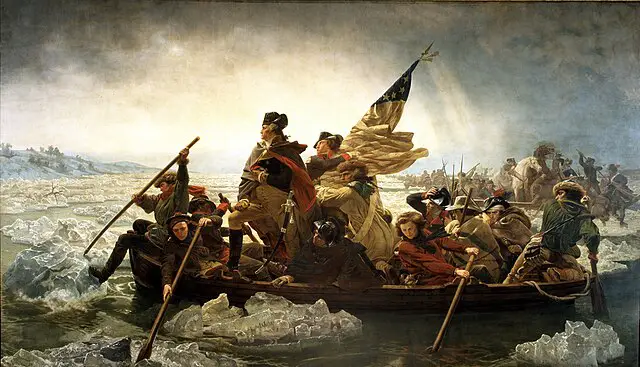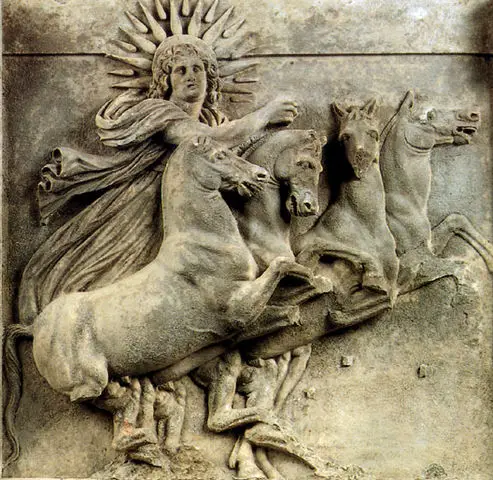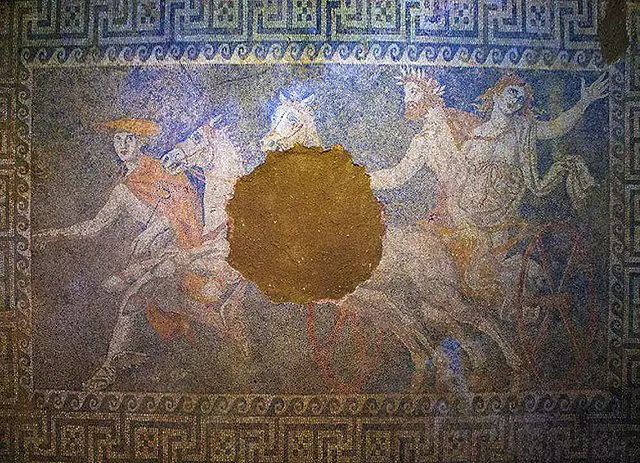| Further Reading | The 3 Biggest Medieval Kingdoms In Europe |
One of the biggest questions asked of any medieval military historian is how fast a typically medieval army could march in one day. This answer varied a lot depending on the composition of the army, the quality of supply lines, and the technology available to the army. What follows is a brief article that gives some statistics for how fast the average medieval army was.
Generally speaking, the average medieval army could cover about 14 miles in one day. This was fast for a medieval army and could only be accomplished if the commander had a supply chain that could keep up with the army. However, depending upon the composition of the army they could leave the supply carts behind and cover up to 30/40 miles in a forced march before returning.
It is important to remember that during medieval army marches the limiting factor was often not the men’s ability to march but rather it was the speed at which they could be resupplied. If the army marched too fast then they would leave behind the supply chain and be left without food or water.
Here at The History Ace I strive to publish the best history articles on the internet. If at the end of this article you enjoyed it then consider subscribing to the free newsletter and sharing around the web.
Without further ado, here is an entire article going over our statistics on how fast medieval armies moved.
The Speed Of Medieval Armies Was Limited By The Supply Train And Logistics
When most people discuss how fast medieval armies could move they forget the major limiting factor, the logistics behind organizing and supplying a medieval army.
Unlike the Romans, most medieval armies were marching in foreign lands. The Romans had the luxury of being able to plan ahead for towns/forts to house and feed their army. This was not a luxury that medieval armies had.
Instead, medieval armies would practice a military tactic called pillaging. This was where a medieval army would seize a town or village and loot the entire thing taking all of the resources to supply their march to the next town.
Medieval army commanders would then create supply carts of these pillaged goods to trail behind the army. This would create a baggage train at the end of the army which was attended to by the camp followers of the army.
These camp followers consisted of families of the soldiers along with service personnel. This made the baggage train a high-priority target for armies wishing to collapse both the logistics and march of the medieval army.
As such, the question of how fast a medieval army could march was instead a question of how fast the baggage train could move. This was the major limiting factor of medieval armies.
Composition Of A Medieval Army Affecting How Fast It Can Move
On top of the baggage train being a problem another huge factor in how fast a medieval army can move comes from its composition.
An army of mounted knights can move significantly faster than an army of foot soldiers. A fully armed warhorse with a knight can easily cover 30-35 miles in one day, however, after a couple of days of this pace, the horse will have to rest for a day.
On the other hand, a medieval army that is composed of peasants who were conscripted from villages might only be able to handle 10 miles of marching a day. This was because most peasantry would have to carry their own equipment and might have to forage for their own food while marching.
During the late medieval era, armies would start to become more professional. A medieval army of professionally trained soldiers might be able to march up to 20 miles a day before needing rest. However, this pace would only be sustainable for a couple of days before the army would return to a normal 15 miles a day.
If the medieval army was fighting in their own domain and had ample supplies then they could march significantly faster. The Mongol army for example could cover nearly 50 miles every day when marching through its own territory. This was because of waystations that could give fresh horses and supplies.
However, this same Mongol army would slow down to a normal pace when entering foreign territory. In March of 1242 the grandson of Genghis Khan, Kadan, lost control of his baggage supply train while in Croatia and had to execute several of his Hungarian prisoners just to keep supplies from running out.
As such the composition of a medieval army drastically affected how fast it could move. An army of mounted Mongol warriors could easily cover 30-50 miles a day in their own territory, while an army of peasants in a foreign land might only cover 5-10 miles a day.
What Is The Fastest That A Medieval European Army Could Move
If we throw the problem of resupply to the wind and give a medieval an open field then how fast could they move in one day? Well, thankfully we have some amazing examples of forced marches in the medieval period to give us an idea.
It is important to note that these speeds were not sustainable. What follows is pretty much either a full sprint, gallop or jog.
Fastest Mixed Army of Calvary, Archers, Camp Followers, And Infantry: 43 Miles In One Day
For a mixture of cavalry and infantry we have a forced march in 1010 by the Polish army under King Boleslaw I the Brave. Historians have recreated this march and found that it covered an astounding 43 miles in just one day!
That would mean that Boleslaw managed to coordinate an entire army to essentially jog for an entire day straight to raid the province of Meissen. This would be an astounding feat of lighting warfare as by the time anybody could mobilize an army King Boleslaw was already back home.
Naturally, this was the exception. Most medieval armies would move at about 1/4 of this pace.
Fastest Calvary Army In Foreign Territory: 75-100 Miles
If the medieval army was composed of just mounted soldiers then the speed at which the army could move was significantly more. Here we have two major examples of mounted soldiers covering massive amounts of ground, fighting, and then returning back to camp in one day.
The Kievan Rus of the Russian Steppe were known for their mounted speed. The famous 20th-century Russian historian Boris Rybakov provides accounts that the Rus could mount up, ride, fight, and return home in one day. The number of miles on average they would cover would be in the range of 50-80 miles in one day.
The fastest instance of a cavalry army marching happened in 1241 when the Mongol army invaded the Kingdom of Hungary. During the start of this war, the mounted Mongol Army managed to cover around 100 miles a day! They would ride out, raid the Hungarians, then ride back and get resupplied. This is by far the fastest army that medieval Europe had ever seen. However, it was not sustainable, and when on extended campaigns the Mongols would have to slow down to a normal marching pace.
Fastest Extended Forced March In Medieval Europe: 27 Miles A Day For A Week Straight
The fastest extended march medieval army with a supply chain came in 1066 when King Harold marched his army from London to Hastings in one week. This was a distance covered of around 200 miles in under a week or about 27 miles a day.
King Harold wanted to surprise the invading French army and to do so he had to force his army to march nearly continuously to meet the French army near Hastings on the coast of England.
King Harold had the luxury of marching his army in his own country. However, at the pace of 27 miles a day this army would have had little time to re-supply. If you were a soldier in the English army at this point you would have essentially walked for 12 hours straight, ate, slept for 4 hours, then marched for another 12 hours. This went on for a whole week.
Conclusion
There you have it; an entire article that goes over the statistics on how fast medieval armies moved.
Historians argue on how fast medieval armies could move on average. The conservative number is somewhere around 12-15 miles on average. However, this largely depended on the terrain, composition of the army, technology, and supply chain.
Here at The History Ace I strive to publish the best history articles on the internet. If you enjoyed this article then consider subscribing to the free newsletter and sharing it around the web.
Further, you can check out some of the other articles below.
-
How The American Revolution Changed The World

Here is how the American Revolution changed the world. Many people are not aware of just how important this event actually was.
-
Why The Roman People Loved Chariot Racing

Why did the Roman people love chariot racing? Well it all comes down to these 3 reasons.
-
The Design and Color of Roman Chariots

What was the design and color of Roman Chariots? Were they faster or slower then normal chariots? Well here is everything!
Sincerely,
Nick